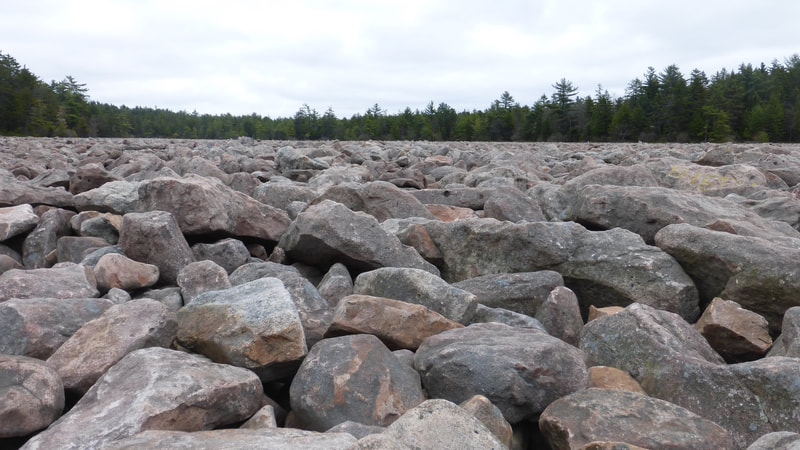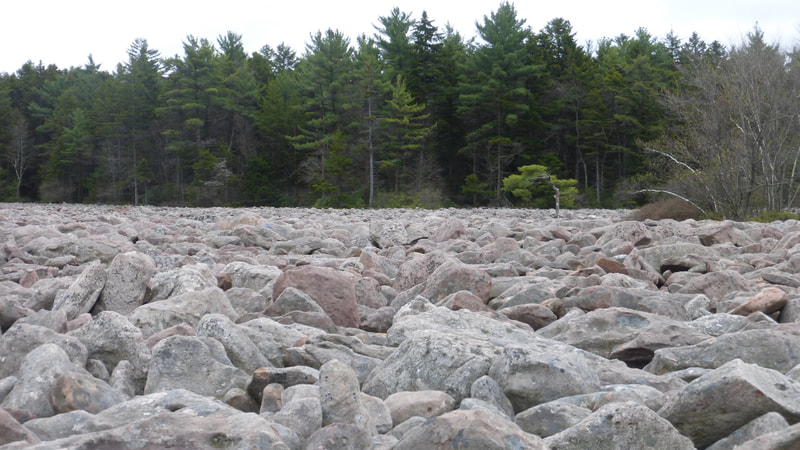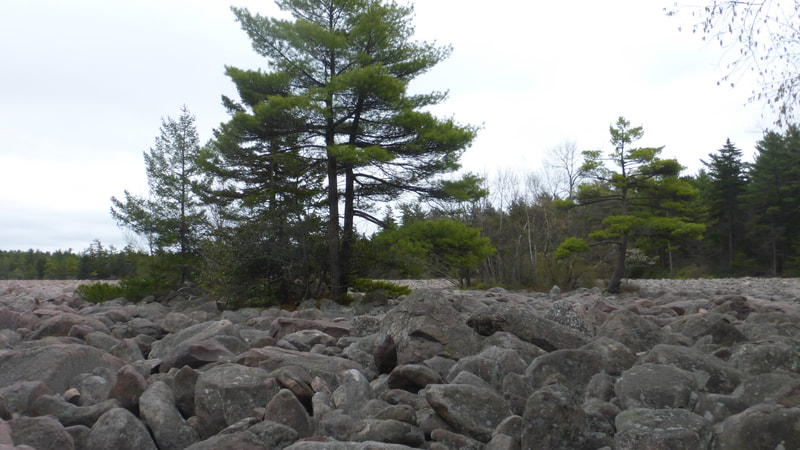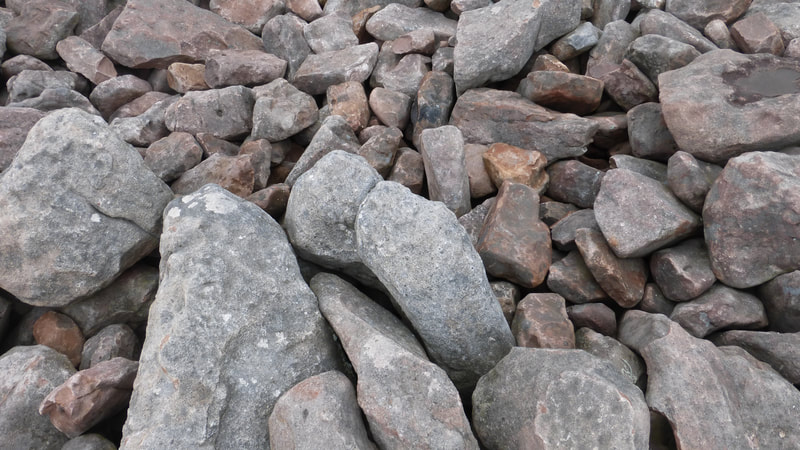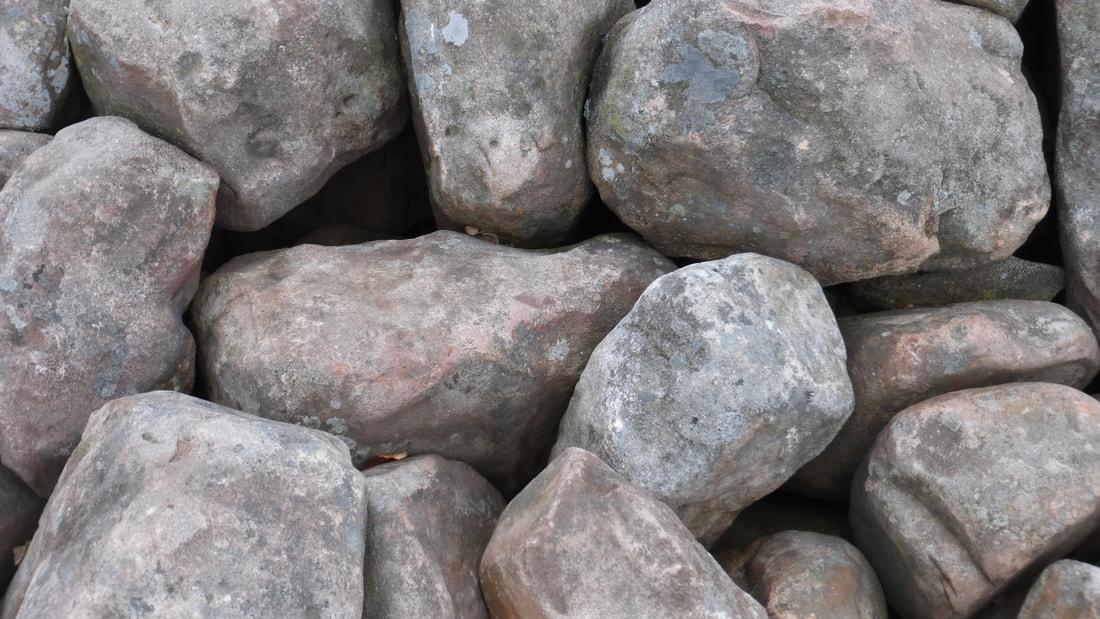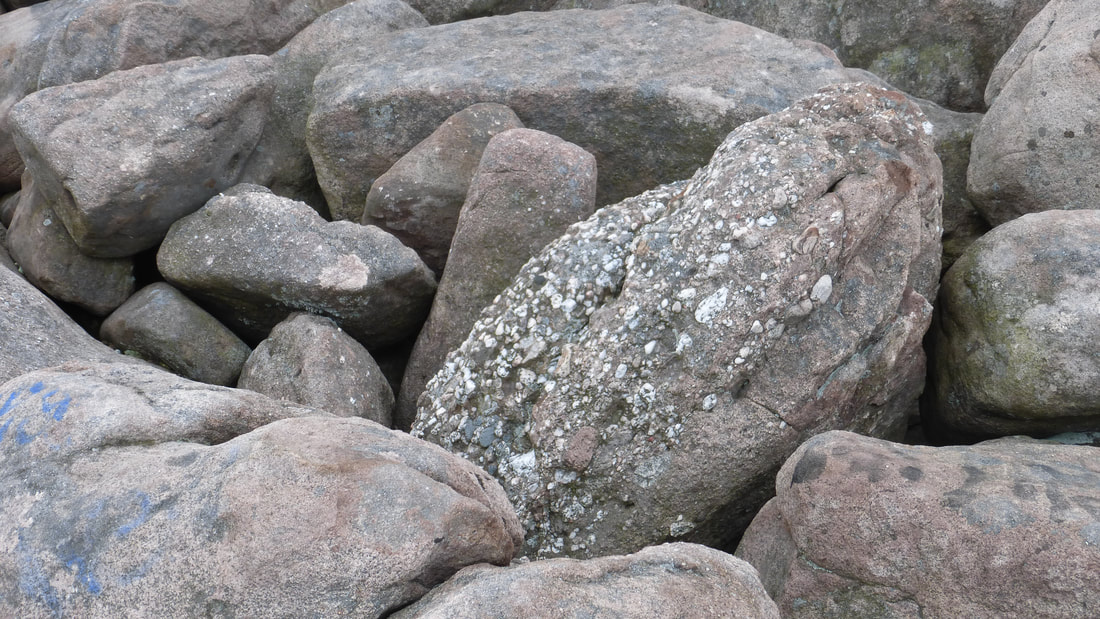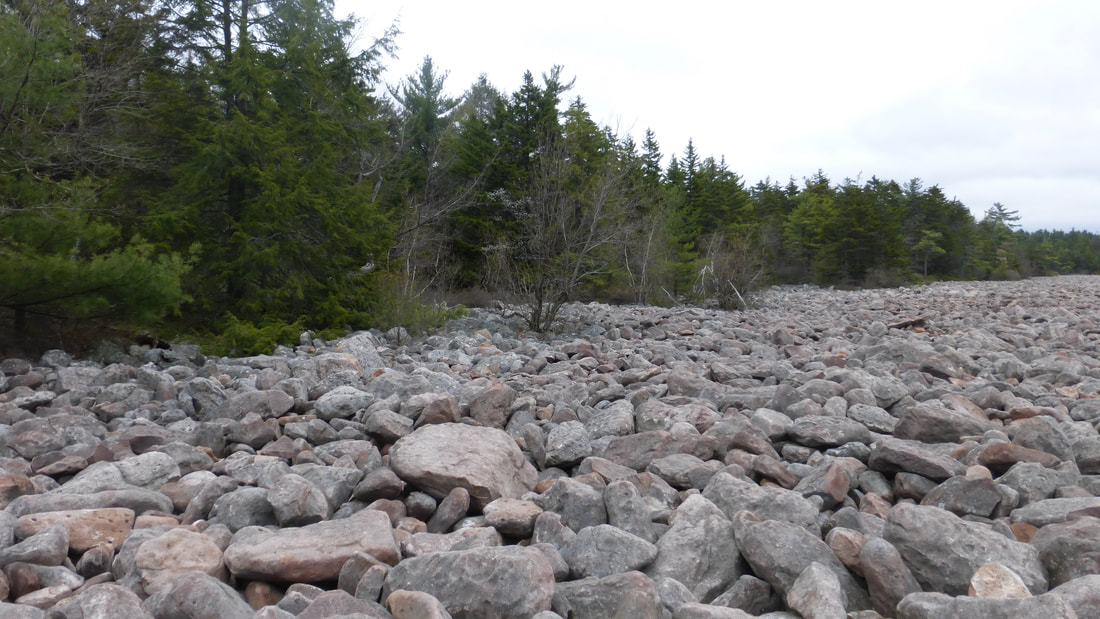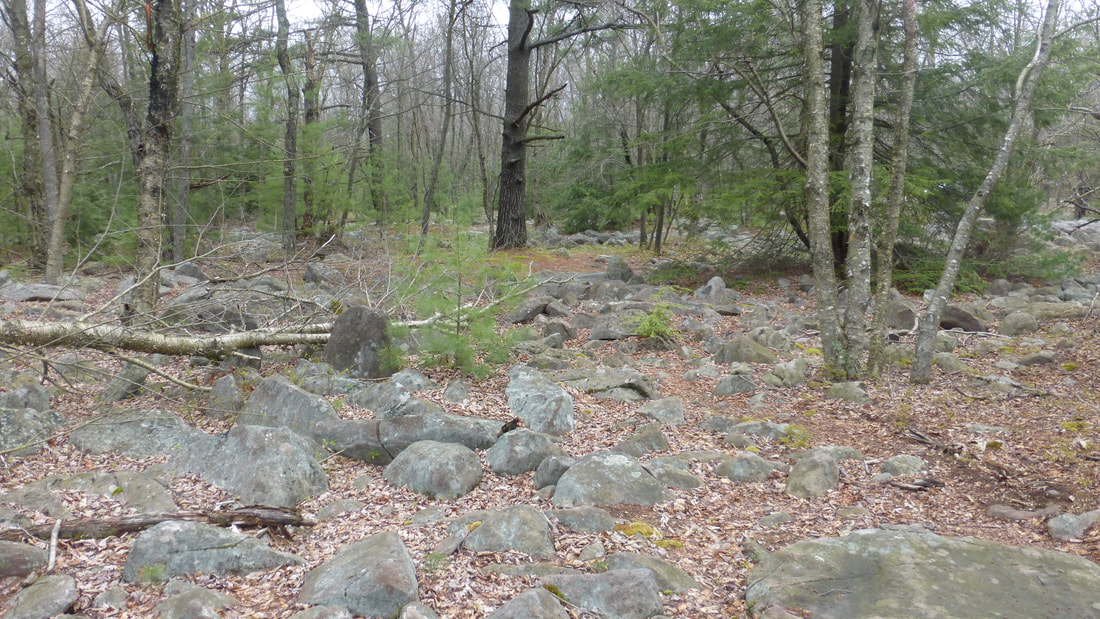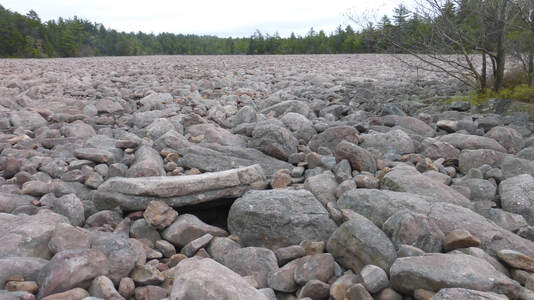The woods open up to a wide clearing carpeted entirely with gray sandstone boulders. The blocks rest at all angles on other boulders below, looking as if they were recently jumbled. The edge of the woods is a distinct line, with only rare islands of trees interrupting the blockfield's barren expanse.
Dimensions The clearing is about 150 yards (m) across and 500 yards long, about 16 acres in area. Boulders in the field are 2-10 feet (0.5-3 m) in diameter, with some larger slabs as much as 20 feet (6 m) across.
Key Details
- Origin: This blockfield is a relic from cold climate conditions in the Ice Age, when ground south of the ice sheet was tundra with permafrost below its surface. Top layers of the soil nearly liquefied in summer, flowing like honey on the slightest ground slope. Fallen boulders at the base of a cliff were carried along with the moving soil. As the climate warmed, the soil between boulders washed away, leaving this arrested river of rocks.
- Spaces between the boulders are empty: no soil can be reached even by delving several layers down. The lack of a soil fill makes some of the boulders unstable when stepped on, because they just rest on a few corners of rocks below.
- The sandstone making up most of the boulders is coarse in texture, made up of large, angular sand grains. Rock surfaces are rough enough to provide good traction for any kind of footwear. Some boulders are composed of conglomerate, a sandstone-like rock densely packed with gravel and pebbles.
- The top of the boulder field is remarkably level, allowing a long-distance view of anything standing even slightly above that horizon. Such uncomplicated land shape jarringly contrasts with the odd angles of the piled boulders seen close up.
- At the field's edges, rock-strewn ground extends some distance beneath tree trunks and brush, but with soil showing there between the boulders.
Story Elements
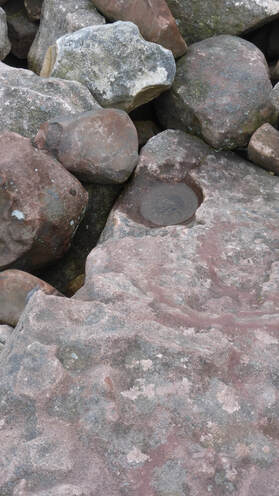
- This field can only be crossed on foot or by flying. It is impassable for mounts or vehicles. Even large-wheeled or tracked vehicles would likely become stuck after 10-20 yards (meters) of progress. This land feature could require significant rerouting of a day's overland travel by a group including horses, wagons, vehicles, or livestock (although a herd of goats might make a crossing of the boulder field in a picturesque way). Bypassing this obstacle would require a diversion not only around the field's open length, more than quarter mile (half km), but around the broader area of adjacent woods with difficult, boulder-strewn ground.
- Individuals on foot being tracked by faster-moving mounted enemies could gain some respite by picking their way deliberately across the blockfield. The pursuers might have time-costing mishaps on the boulder-filled ground as well as difficulty navigating the forested land around it.
- Movement across the field on foot is slow, in carefully selected long steps and jumps from one boulder top to another. Any ill-considered step in a gap between boulders could result in scrapes or a twisted ankle. Someone sitting on a boulder top out in the field could only be approached at a slow pace from any direction, and might be under only sporadic observation because those approaching must give attention to their own steps from rock to rock.
- Thirst will be a key problem for a person injured out on the blockfield or staying there for an extended time as an escape from dangers in the woods. Water down at the level of the soil surface from recent rain or snowmelt will be far out of reach. Long, flexible, narrow tubing could possibly solve the problem. Another source of water on a fairly level boulder top could be a rain pit, a puddle basin in the sandstone surface that has been deepened by intense weathering of the water-soaked rock there over the years. These are not very common, but excellent luck might provide one nearby.
- To stay out of view of enemies that are standing on the blockfield surface some distance away (at least 100 feet, 30 m), a character can lie down in one of the low spots between larger boulders, below the field's general surface horizon. (This gives no concealment from aerial views.) Such spots are common on the field's surface, and might be used to sneak across the field in a series of short scrambles, drops, and crawls. Anyone doing this would risk making noise and losing balance if an unstable boulder tilts under their weight.
- In rare locations, a wide rock slab can be found roofing over an empty space that can provide two or three adults with complete hiding and some degree of shelter from the elements. Crevices between rocks in the hidden cavity below might yield supplies or other surprises left behind by previous visitors.
- Combat Dynamics:
- Fighters engaging in close combat would have to move cautiously between boulder tops, approaching opponents awkwardly, possibly tripping or toppling in their attempts to engage. Characters could fall on the rocks and injure themselves and/or have limbs trapped in holes.
- Characters in the blockfield trying to dodge projectiles would have the added challenge of the uncertain footing. Missiles that ricochet and clatter between rocks can add to the danger and heighten the sense of overall confusion.
- Combatants with projectile weapons could easily find partial cover on the open blockfield.
- Blasts could send smaller rocks flying; larger boulders could shield combatants from the dangerous debris.
- What kind of childhood games, athletic contests, or rites of passage might local people perform in this blockfield? These people might become renowned for their dexterity and surefootedness.
- Magic or exotic technology could cause the river of rocks to re-mobilize and spread further down this shallow valley.
- Perhaps some community of creatures has used the abundant empty space between the blocks to store their eggs. People might converge there to steal them. What if they were undisturbed and hatched?
- Someone might use the blockfield as a porous reservoir to hold a vast quantity of liquid dammed up out of sight. It might however, leak out and create problems.
Reference Location
Hickory Run Boulder Field, Hickory Run State Park, Pocono uplands of eastern Pennsylvania. Most direct access is by an unpaved park road and short foot trail.
© Rice-Snows 2022
Proudly powered by Weebly
